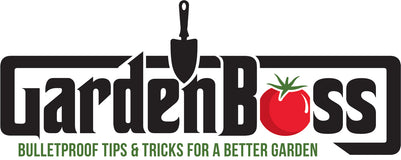How far apart to plant tomatoes and Optimum site selection to grow the best crop of Tomatoes
The ideal row spacing and how much space to plan for your tomatoes depends a lot on the type of tomato you decide to grow (determinate type, indeterminate type, Semi Indeterminate type).
Determinate types (bush type, like the photo above) Do the best with plenty of room. Ideal spacing for determinate tomatoes is 4-5 foot row spacings with 2-foot plant spacings. On the farm we use 6-foot row spacings and 2 feet between plants with a stake hole between each plant for support.

True indeterminate tomatoes (vine type above) can use more space because of the support system they will need (wire cages, baskets, cables for greenhouses) I would recommend 5-6 foot row spacings so you will have enough room between the rows to train the indeterminate tomato plants up your support system. However, like the photo above if you can train them to grow vertical you could space the plants in the row closer.
Semi Indeterminate varieties can vary wildly in the way they grow, and I would go bigger is better with this class of plant.
Site selection is one of the most important decision you will make for your garden and many times the site will make or break your endeavor.
Soil type is important! I will have a whole post dedicated to soil types and selection, but briefly I will say that if you are doing a raised bed garden, I like to use 60% topsoil, 20% peat moss, and the rest compost and worm castings if you can afford them. I strongly recommend purchasing compost from a reputable composter. If done improperly, compost can harbor E. Coli or other dangerous bacteria and make you extremely ill if you were to get it on your fruit or your hands when working in the garden. For in ground gardens a coarse, good draining soil with good organic content is best for tomatoes.

Another important aspect of site selection is sunlight. Sunlight is undoubtedly the most important part of almost any organism on earth. Plants produce energy almost entirely from sunlight in a process called photosynthesis. I am sure you all know what photosynthesis is and if you want to read up on it there are plenty of books and websites out there to explain it in detail for those wanting to have a deep understanding of it. Here are some important points about sunlight and your plants.
- At planting it is important that the seedling be exposed to full sun for several hours a day. Although you don’t want the plant exposed to intense heat (over 90 f) a warm area with plenty of sunlight will make your plant grow faster and stronger.
- A special note to those growing in extremely hot arid environments like the southwest U.S. 100% full sun may not be a good option if the temperatures get over 90 with very low humidity. If you live in a hot climate at a low latitude you may need to harden your seedlings if you started them in low light conditions or indoors to the harsh sun and hot weather. Gradually introduce the plants to the sun exposing them more and more each day.
- Anyone in zone 6 and North bellow should always plant in full sun.
- Not enough sunlight and the plant will (stretch) or elongate for the sun. Much like alfalfa sprouts do in the grocery store.
- If they stretch and the stem is narrowed and this characteristic stays with the plant through its lifetime. A narrowed stem impedes the plants’ ability to transfer water and proper nutrients to the branches that hold the tomatoes. Making them smaller and more deficient in proper nutrients. This effects the overall quality and even the taste. Just like childhood is for humans this time is critical for proper development for whole life of your tomato plant.
- On farms in the south, we try to plant our rows where they run north and south because east and west rows tend to be heavier on one side than the other with fruit set. This is because of the suns position in the sky. If it is the early spring the sun is south, and the north side of the plant gets less sunlight. Much of the fruit will be on the sunny side and the tomatoes on the sunny side get mature before the northern side. So, when possible plant in a fashion that the plant gets full even sunlight. Do not plant in place that has shade in different parts of the day if it can be avoided.
Don’t forget to let the sunshine in!! Good luck and be sure to message me with questions or comments. Follow me on Facebook, Instagram or Twitter for more tips and tricks. I will do my best to answer any and all questions personally.
Garden Boss

Leave a comment
Please note, comments must be approved before they are published